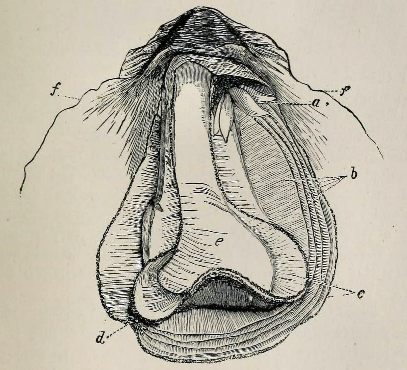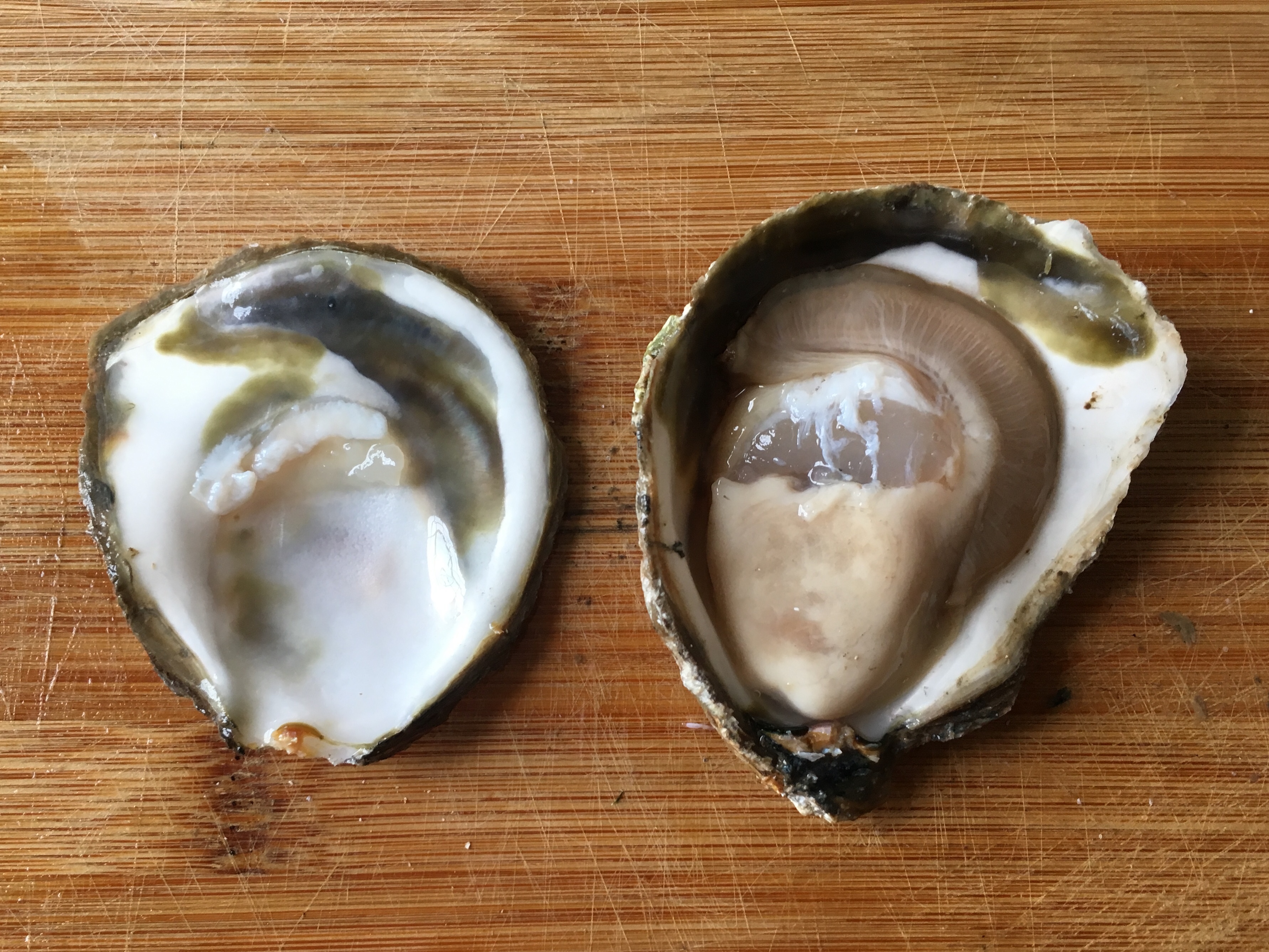Ostrea Edulis on:
[Wikipedia]
[Google]
[Amazon]
''Ostrea edulis'', commonly known as the European flat oyster, is a species of


 ''Ostrea edulis'' is now also being
''Ostrea edulis'' is now also being
UK Biodiversity Action Plan
{{Taxonbar, from=Q729678 Ostrea Commercial molluscs Molluscs described in 1758 Taxa named by Carl Linnaeus
oyster
Oyster is the common name for a number of different families of salt-water bivalve molluscs that live in marine or brackish habitats. In some species, the valves are highly calcified, and many are somewhat irregular in shape. Many, but no ...
native to Europe
Europe is a continent located entirely in the Northern Hemisphere and mostly in the Eastern Hemisphere. It is bordered by the Arctic Ocean to the north, the Atlantic Ocean to the west, the Mediterranean Sea to the south, and Asia to the east ...
. In Great Britain and Ireland, localized names include Colchester native oyster, mud oyster, or edible oyster. In France, ''Ostrea edulis'' are known as ''huîtres plates'' (flat oysters) except for those that come from the estuary in Brittany
Brittany ( ) is a peninsula, historical country and cultural area in the north-west of modern France, covering the western part of what was known as Armorica in Roman Gaul. It became an Kingdom of Brittany, independent kingdom and then a Duch ...
, France, which are known as Belons.
The fossil record of this species dates back to the Miocene
The Miocene ( ) is the first epoch (geology), geological epoch of the Neogene Period and extends from about (Ma). The Miocene was named by Scottish geologist Charles Lyell; the name comes from the Greek words (', "less") and (', "new") and mea ...
(age range: 15.97 million years ago to present day). Fossils have been found in Belgium, Italy, the Netherlands, Egypt, Greece, Spain, the United Kingdom, Austria, France and Germany.
Description
Right and left valve of the same specimen:
File:Ostrea edulis 05.jpg, Right valve
File:Ostrea edulis 06.jpg, Left valve
Fossil (Pliocene)
File:Ostrea edulis 07.jpg, Right valve
File:Ostrea edulis 08.jpg, Left valve
When mature, ''O. edulis'' adults range from across.
Shells are oval or pear shaped, white, yellowish or cream in colour, with a rough outer surface showing pale brown or bluish concentric bands on the right valve. The two valves are quite different in shape and size, as the left one is concave and fixed to the substratum, while the right one is almost flat and fits inside the left. The inner surface is smooth, whitish or bluish-grey.
Biology
''The majority of Ostrea edulis'' start life as males. Sexual maturity is reached after a period between eight and ten months. and may change sex depending on the water temperature, among other factors. Usually the lifespan can reach about six years, with a maximum of 15 years. Adult oysters feed by filtration.
Distribution
The species naturally ranges along the western and southern coasts ofEurope
Europe is a continent located entirely in the Northern Hemisphere and mostly in the Eastern Hemisphere. It is bordered by the Arctic Ocean to the north, the Atlantic Ocean to the west, the Mediterranean Sea to the south, and Asia to the east ...
from Norway
Norway, officially the Kingdom of Norway, is a Nordic countries, Nordic country located on the Scandinavian Peninsula in Northern Europe. The remote Arctic island of Jan Mayen and the archipelago of Svalbard also form part of the Kingdom of ...
to Morocco
Morocco, officially the Kingdom of Morocco, is a country in the Maghreb region of North Africa. It has coastlines on the Mediterranean Sea to the north and the Atlantic Ocean to the west, and has land borders with Algeria to Algeria–Morocc ...
and including most of the British Isles
The British Isles are an archipelago in the Atlantic Ocean, North Atlantic Ocean off the north-western coast of continental Europe, consisting of the islands of Great Britain, Ireland, the Isle of Man, the Inner Hebrides, Inner and Outer Hebr ...
and the Mediterranean
The Mediterranean Sea ( ) is a sea connected to the Atlantic Ocean, surrounded by the Mediterranean basin and almost completely enclosed by land: on the east by the Levant in West Asia, on the north by Anatolia in West Asia and Southern ...
coast. Naturally viable populations have appeared in eastern North America
North America is a continent in the Northern Hemisphere, Northern and Western Hemisphere, Western hemispheres. North America is bordered to the north by the Arctic Ocean, to the east by the Atlantic Ocean, to the southeast by South Ameri ...
from Maine
Maine ( ) is a U.S. state, state in the New England region of the United States, and the northeasternmost state in the Contiguous United States. It borders New Hampshire to the west, the Gulf of Maine to the southeast, and the Provinces and ...
to Rhode Island
Rhode Island ( ) is a state in the New England region of the Northeastern United States. It borders Connecticut to its west; Massachusetts to its north and east; and the Atlantic Ocean to its south via Rhode Island Sound and Block Is ...
subsequent to artificial introduction in the 1940s and 1950s.
Habitat
''Ostrea edulis'' can be found in estuarine and shallow coastal water with hard substrata of mud and rocks.Human use
''Ostrea edulis'' has been harvested throughout Europe as an important food source since prehistory. During Roman occupation of Britain ''O. edulis'' oysters were exported in large quantities back to Italy. However, due to their more robust nature and greater ease of cultivation thePacific oyster
The Pacific oyster, Japanese oyster, or Miyagi oyster (''Magallana gigas'') is an oyster native to the Pacific coast of Asia. It has become an introduced species in North America, Australia, Europe, and New Zealand.
Etymology
The genus ''Magal ...
s, '' Crassostrea gigas'', now account for more than 75 percent of Europe's oyster production.
European flat oysters are famously grown in Brittany, France. The true Belon oyster is cultivated in the Belon River, France, and has the AOC protected name. In the 1950s, Dutch scientists artificially introduced Belon oyster seed into the waters around Maine
Maine ( ) is a U.S. state, state in the New England region of the United States, and the northeasternmost state in the Contiguous United States. It borders New Hampshire to the west, the Gulf of Maine to the southeast, and the Provinces and ...
in hopes to establish a viable stock. The initial project was abandoned but ten years later natural colonies of flat oysters were found in the wild. Many North American suppliers use the name 'Belon' to species that are found in the wild throughout the United States
The United States of America (USA), also known as the United States (U.S.) or America, is a country primarily located in North America. It is a federal republic of 50 U.S. state, states and a federal capital district, Washington, D.C. The 48 ...
.
 ''Ostrea edulis'' is now also being
''Ostrea edulis'' is now also being mariculture
Mariculture, sometimes called marine farming or marine aquaculture, is a branch of aquaculture involving the cultivation of marine organisms for food and other animal products, in seawater. Subsets of it include ( offshore mariculture), fish fa ...
d in the states of California
California () is a U.S. state, state in the Western United States that lies on the West Coast of the United States, Pacific Coast. It borders Oregon to the north, Nevada and Arizona to the east, and shares Mexico–United States border, an ...
, Maine
Maine ( ) is a U.S. state, state in the New England region of the United States, and the northeasternmost state in the Contiguous United States. It borders New Hampshire to the west, the Gulf of Maine to the southeast, and the Provinces and ...
, and Washington in the United States. The species once dominated European oyster production but disease, pollution, and overfishing sharply reduced the harvest. Currently, there are efforts across Germany, the UK, France, Scotland, and Wales to restore oyster reefs and maintain the habitat.
U.S. oyster growers farm ''O. edulis'' in small quantities on both coasts. They are prized for their unique tannic seawater flavour, sometimes described as dry and metallic, and are more expensive than other American oysters. The flavour is considered excellent for eating raw on the half shell.
The adductor muscle of the European flat in combination with the shape of the shell results in a somewhat weaker seal compared with other oyster species. It is common practice to use rubber bands to prevent oysters from spilling their liquor and dehydrating in storage before consumption.
See also
*References
External links
UK Biodiversity Action Plan
{{Taxonbar, from=Q729678 Ostrea Commercial molluscs Molluscs described in 1758 Taxa named by Carl Linnaeus